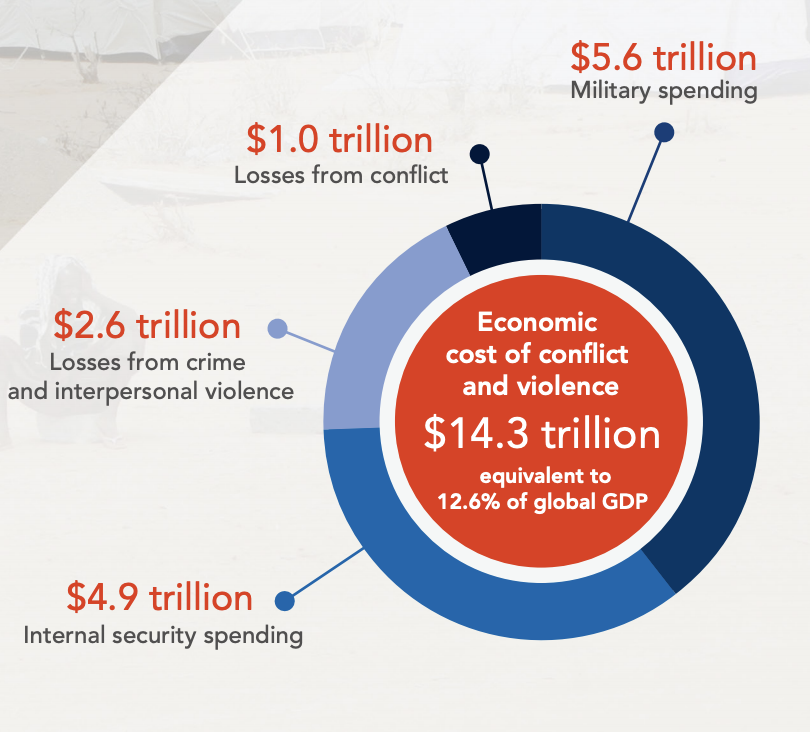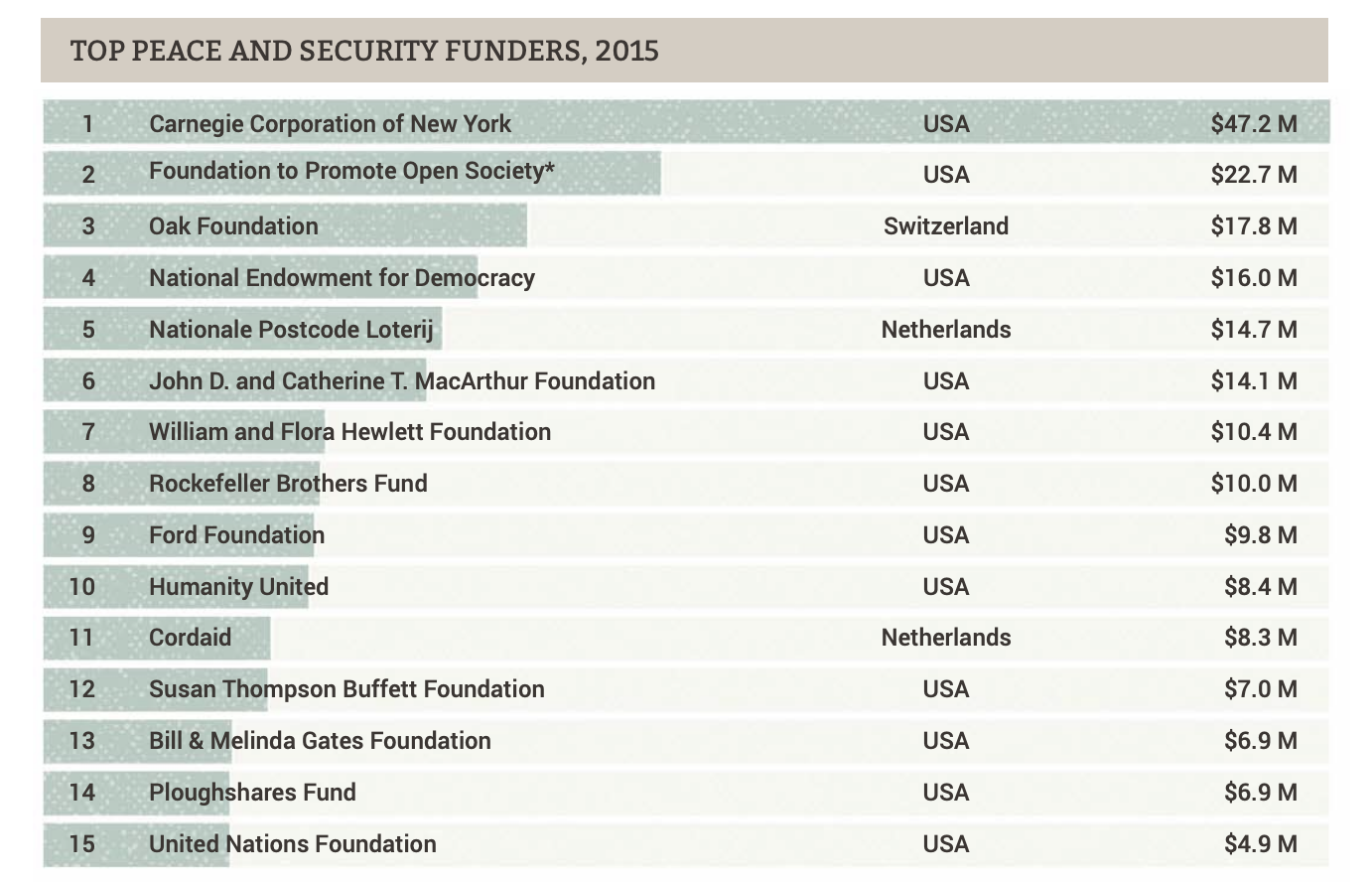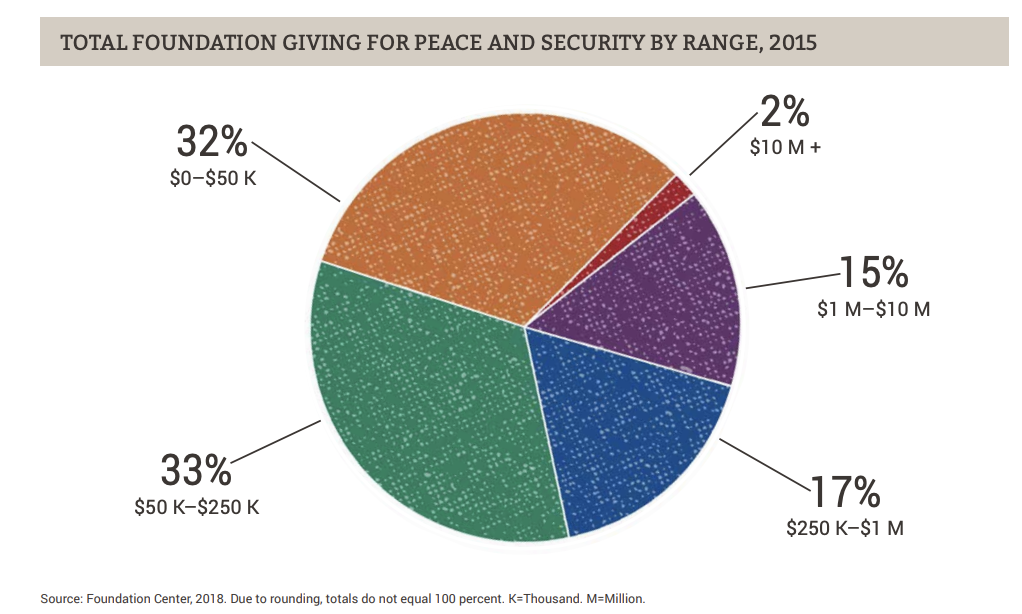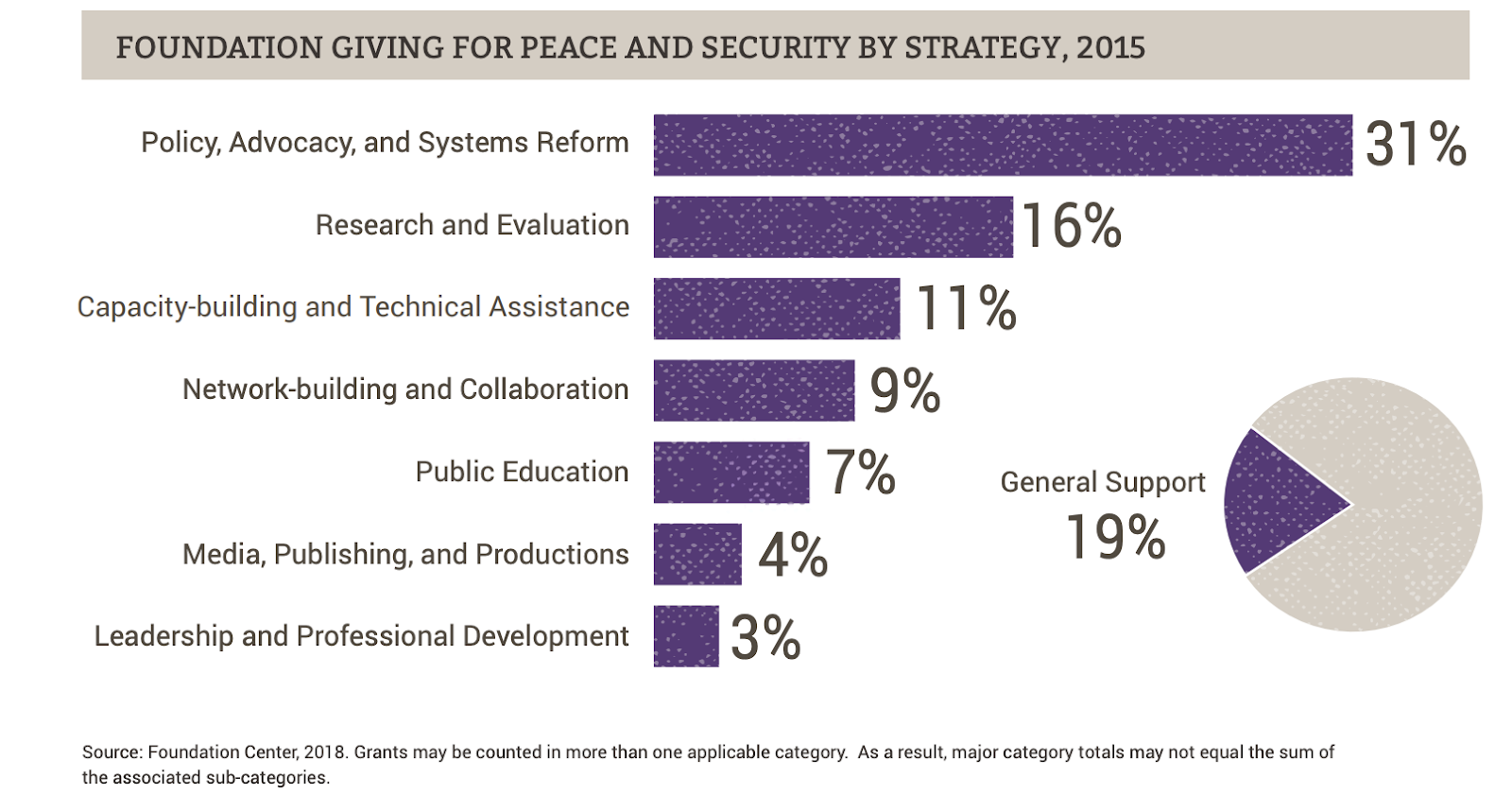Evaluating Communal Violence from an Effective Altruist Perspective
By Frank Fredericks @ 2019-08-13T19:38 (+16)
OBJECTIVE
The purpose of this piece is to evaluate the issue of communal violence from the effective altruist perspective.
DEFINING THE ISSUE
What is communal violence? Communal violence is any physical violence between members of any two identity groups. As Gordon Allport describes in The Nature of Prejudice, when people identify strongly with an identity group, they internally define those in other identity groups as the “other.” When violence is enacted against these other identity groups, that violence is considered communal violence, that is to say, when one community acts against another community. Examples of communal violence can include genocide (enacted against religious, racial, etc. communities), gang violence, political violence, ethnic and tribal violence, some forms of terrorism, and in some cases civil war (in instances where the opposing sides comprise social identity groups). It does not include domestic violence (physical violence against members of one’s own family), interpersonal violence (violence as a result of an interpersonal dispute in which in- and out-group dynamics are not present), and state violence (violence between states or by states on their own people, in which social identity does not play a role).
SCALE
We define scale by both the dimensions of casualties and of economic impact, as well as acknowledge secondary impacts which we do not have data to accurately quantify.
Mortality: Identifying the total casualties in communal violence is difficult, given the various definitions being used. For instance, using the UNODC’s most recent data, about 49,000 people are estimated to have died in “battle deaths” in civil wars in 2008. Contrastingly, The World Bank also notes that in fragile and conflict affected situations in 2016, there were 79,976 battle-related deaths, which includes interstate wars outside our focus. Terrorist attacks both are a component of communal violence and are not counted above. START cites that 32,676 died from terrorist attacks in 2016. Between competing definitions and variations in casualties between years, the true scale is unclear. For our needs, we will assume a range of 50,000 and 100,000 casualties per year.
Social impact: It is extremely difficult to account for the various negative social impacts connected to communal violence. You have significant impacts to the quality of life of any dependents (children, spouses, the elderly) of those killed in communal conflict. Secondly, even those who are not directly impacted, close family members will experience loss, lower feelings of safety, and oftentimes resentment toward the “other” community. Furthermore, the entire community in which communal violence takes place will feel residual effects, from decreases in social trust, the negative impact of lower inter-group collaboration in economic and other terms, and overall decrease in their sense of safety. Those witnessing the violence, as survivors, bystanders, or even perpetrators, are at risk for psychological trauma. Given the lack of specificity and research on these externalities, we are unable to calculate the impact in terms of quality-adjusted life years (QALYs) for all parties. Lastly, there is a risk that communal violence may trigger larger conflicts, whether countrywide civil war, inter-state war, or other forms of regional conflict.
Economic cost: An estimated $14.3 trillion (in PPP-adjusted terms) was lost in 2016 as a direct result of conflict (this includes all forms of violent conflict, not just communal conflict), which included $5.6 trillion on military spending, $1 trillion from losses caused by conflict, $2.6 trillion lost from crime and interpersonal conflict, and the final $4.9 trillion on internal security spending. In comparison, only $10 billion was spent on peacebuilding programs in 2016, for both communal and interstate conflicts, which is equivalent to less than 1% of the cost of war. At the same time we see that $12 billion is spent on refugee aid annually, according to the United Nations’ Pathways for Peace. There are also more difficult-to-measure costs, including losses of foreign direct investment as a result of lower investor confidence and increases in interest rates on foreign debt due to perceived economic insecurity.

Image Source Page 17
Possible existential risk: While this paper previously defined communal violence as distinct from interstate violence, communal violence can transfer into interstate violence, and this can pose an existential threat when it is between nation states with nuclear weapons. For instance, The Council on Foreign Relations recently found that, “tensions and concerns over a serious military confrontation between nuclear-armed neighbors India and Pakistan remain high.” Escalation could begin on the communal level, as tensions rise between the states when Hindu- Muslim violence occurs in either country. Similarly, the Council on Foreign Relations has defined the conflict between Israel and Iran as a ‘pressure point’. Both countries are suspected to possess nuclear weapon capabilities.
This trend can be paralleled in other conflicts, during a time when the world is facing an increase in global conflicts. Between 2006 and 2016 the number of conflicts around the world increased from 278 to 402. So while we do not have a measure for the probability of existential war, we must acknowledge that communal violence does pose some amount of existential risk, no matter how small.
TRACTABILITY
Tractability, or solvability, gives us an idea of how much progress could actually be made if more resources were made available to the issue area of communal violence. This includes the related interventions such as: direct interpersonal dialogue (like Seeds of Peace), a collaborative goal for peacebuilding (World Faith), leadership diplomacy, economic development, media campaigns, truth and reconciliation (restorative justice), and Track II diplomacy (informal conversations between non-state actors).
Because measuring tractability is difficult given the various contexts in which communal violence takes place, we present case studies in which key attributions can suggest answers to tractability.
- Northern Ireland: Known as “The Troubles” Northern Ireland experienced communal violence in the 1960’s through the 1990’s, which led to the death of over 3,000 people and 47,000 injured. This conflict can be seen as relatively tractable given how responsive the conflict was to increased resources and efforts. Following the Anglo-Irish Agreement (AIA), both the British and Irish governments established the International Fund for Ireland (IFI or The Fund) in 1986 to address “the underlying causes of sectarianism and violence and to build reconciliation between people, and within and between communities in Ireland, North and South.” However, in 2005 after an independently commissioned report from Deloitte indicated a need for change, the IFI decided to create a new strategy aimed at “building a sustainable infrastructure for reconciliation operating beyond the Fund’s lifetime. Much of the Fund’s traditional economic-based activities ceased, with resources diverted towards grassroots community development.” This shift has encouraged more local voices to participate in directing the peace process. In the executive summary from 2010, the direct input from stakeholders and project directors led the consultants to give their expert recommendations for future programming. Thus, even in the face of Brexit, resurgence of conflict seems unlikely.
- Israel/Palestine: Leading up to and in the aftermath of the Holocaust, a large number of Jews immigrated into Palestine, which was a mandate of the British Empire. In 1948, The British withdrew from Palestine in 1948 after armed revolt from both the Arab and Jewish residents, leaving the two communities to fight directly. In the creation of Israel as a state for Jews, many Palestinians were either forcibly removed or fled, creating a permanent refugee population that continues to today. Several wars and armed conflict has continued between the states, as well as on the interpersonal level within Israel. From 1948 until 1997, this conflict has killed 13,000 people and several thousand more since that period. In addressing the conflict, several interventions have been considered: diplomacy, dialogue, sanctions, incentives, and education. Thus, given both the duration of the conflict and the resources and solutions forwarded to address it, it appears to be relatively intractable as a social conflict, in that future resources and efforts could be seen as marginal in effectiveness.
- Partition of The British Raj: As the British Empire withdrew from the Asian subcontinent, it left the former colony split into three pieces among two entities: India and Pakistan (East and West, respectively). As a result, riots broke out between civilian Hindus, Muslims, and Sikhs. This was further aggravated by the involvement of private armies with communal agendas, such as the Muslim League National Guard (associated with the Muslim League) and the Rashtriya Swayam Sevak Sangh (a voluntary Hindu nationalist group), who instigated violence and persecution of other religious communities. Violence was not only caused by partition, but its occurrence was used as a rationale for partition in the first place. Within the year, over a million people had died, more than two million missing (possibly died), and 10 million who migrated by threat or out of fear. While this conflict remains tense, with periodic skirmishes and outright fighting between Pakistan and India, as well as religiously-based conflict within each country, it remains relatively limited in terms of casualties (partially due to both nations’ possession of nuclear weapons). Apart from the apparent success of mutually assured destruction in preventing violence, the tractability of the conflict is hard to decipher as few other resources have been invested into long-term sustained peace.
- Singapore: Violence in Singapore between Malays and Chinese erupted in ethnic riots in 1964. “Since that incident, Singapore has experienced only one other ethnic riot, which took place in 1969.” Furthermore, “the government now contains representatives from all of its ethnic communities.” This social cohesion “stemmed from decisive government interventions beginning in the early days of independence in 1965” including the Ethnic Integration Policy which set racial quotas for each public housing block roughly equivalent to the ethnic breakdown of the country’s population. This intervention encouraged contact between different groups of people and prevents “the emergence of ethnic ghettos.” These top-down efforts have been complemented by various bottom-up initiatives to ensure no religious or ethnic group is marginalized.
External Trends: We believe there are other factors that may impact communal violence, including the following:
- Global Development: economic development and growth seem to correlate with an overall reduction in communal violence. However, communal violence does not seem to correlate with poverty itself.
- Political Corruption: Political corruption seems to positively correlate with increases in violence.
- Colonialism: As the previous examples illustrate, communal violence seems to be common in post-colonial contexts, where many borders have been drawn in disregard to geographic grouping of social groups.
- “Aggrieved Entitlement of Masculinity”: There is a growing body of qualitative data that suggests young men who believe that they do not have access to a lifestyle congruent with “what it means to be a man,” relative to their social norms, are more likely to engage in violence.
NEGLECTEDNESS
Within the parameters of economic cost we explored the costs of ongoing conflict according to data collected in 2016. It was concluded that $14.3 trillion, or 12.6% of the global GDP, of productivity are lost to ongoing conflict each year, though this includes costs associated with forms of violence other than communal violence. Below is a table that represents the 15 communities and organizations that provided the most grant-based funding for peace and security in 2015. First and foremost is the Carnegie Corporation of New York, which provides $47.2 million in grants, more than double the next highest foundation, which is the Foundation to Promote Open Society, which provided $22.7 million in grants. The last member of the list, the United Nations Foundation, contributed $4.9 million dollars in grant opportunities. An important note is that the top ten funders of peace and security grants account for 49% of the total funding within the context of the Peace and Security Funding index, which accounts for 336 foundations. Additionally, the median was $100,000.

Image Source Page 5
We have previously established who is providing the funding for grants as well as the median costs of these grants. But, it is equally important to understand how the money is being used and what systems are being prioritized. In the graph titled. Foundation Giving for Peace and Security by Strategy we see that 31% of the money goes to “policy, advocacy and systems reform”. Next, we see that “general support” receives 19% of the total funding. “Public education” is a low priority funder and as a result only received 7% of the $351 million in grants the Foundations Center and Peace and Security Funders Group studied. That being said, it is in many cases expensive to maintain and build sustainable elementary and secondary schools that promote peacebuilding and education. Lastly, the graphic shows “media, publishing and productions” only received 4% of the funding that applied to the study and the lowest funding group was “leadership and professional development”, which acquired only 3% of the funding.

Using the data provided by the Peace and Security Funding Index, we see “public education”, “media, publishing and productions”, and “leadership and professional development” are the three least funded and likely to be the most neglected strategies of peacebuilding outcomes. It is important to note that these three strategies, while the least funded, may not be the least important. Neglectedness is not necessarily a measurement of importance but rather a measurement of how much attention a cause is receiving.

Image Source Page 8
In evaluating the neglectedness of peacebuilding interventions, we lack any meaningful data to determine the absorptive capacity for further funding within any particular conflict, intervention, or organization working in the peacebuilding space. This lack of information is a product of the nascent state of such research in this cause area, the significant differences in effectiveness and tractability across different conflicts, and the low-information, high-uncertainty contexts in which violence takes place. This is both a significant weakness in our ability to fully evaluate the cause area of communal violence, and our ability to use evidence-based approaches to know how to scale, and where.
SUMMARY: Communal Violence as a Cause Area
Ultimately, evaluating whether communal violence is a cause area warranting further attention and resources requires much more quantitative information. While we have a relatively clear understanding of the scale of communal violence, the incomplete picture of both the tractability and neglectedness of this cause area makes it difficult to benchmark this cause area against other important global issues. Furthermore, more research is needed in order to better evaluate interventions and organizations in comparison to one another, so that resources within the field can be most effectively used.
We invite those of you dedicated to understanding peacebuilding from an evidence-based approach to reach out so that we can continue to update this with new research and insight as it becomes more readily available.
This paper was researched and composed by Courtney Steininger, Maneeha Shamsie, Jay Blezow, Joseph Celentano, Jason Ketola, and Frank Fredericks. Special thanks to Jason Ketola for additional proofreading support.
For a draft with sources in Oxford format, please see our Gdoc draft here.
DavidNash @ 2019-08-13T19:56 (+3)
I may have missed this but does the $10 billion spent on peace building programs in 2016 include spending by governments, or is that just foundations?
frankfredericks @ 2019-08-13T21:12 (+1)
The Institute of Economics and Peace has the best details on that in their Cost of Violence Containment research, but my understanding is that number includes government spending. However, it defines peacekeeping (military presence as a deterrence for violence) as something separate than peacebuilding (any nonprofit programming designed to reduce the likelihood of violence). This number is focused on peacebuilding, not peacekeeping.
xccf @ 2019-08-18T18:46 (+2)
communal violence seems to be common in post-colonial contexts, where many borders have been drawn in disregard to geographic grouping of social groups.
Hmmm, would this reasoning also imply that immigration restrictions could reduce communal violence in some cases? If putting people of different social groups in the same country tends to cause conflict.